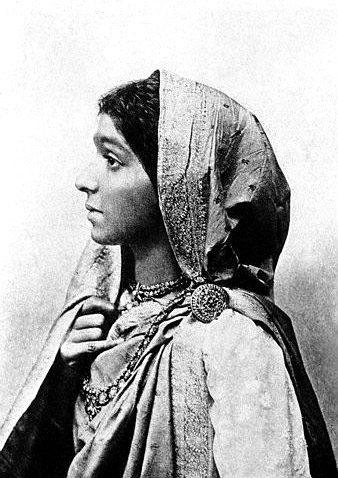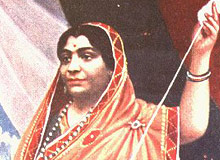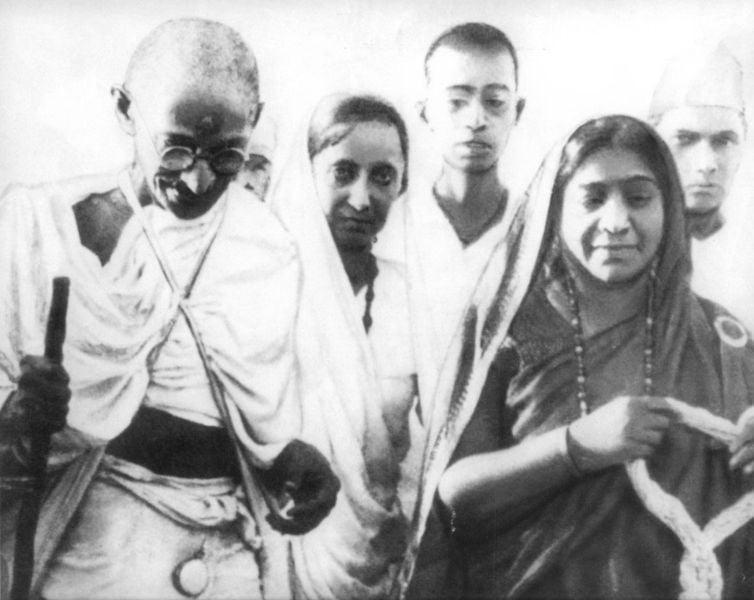
Sarojini Naidu was born February 13, 1879 in Hyderabad. Her father, Aghorenath Chattopadhyaya, was a celebrated scientist, poet and social reformer whose brilliance foreshadowed that of his daughter's. Dr. Chattopadhyaya was a gifted student, earning a scholarship to study at the University of Edinburgh where he earned his Doctorat in Science (the first Indian to do so) before continuing his education in Bonn, Germany, where he continued to earn praise.1 Upon his return, he founded the Nizam College at Hyderabad devoting his life's work to education, very much following in the footsteps of his Brahmin ancestors who were traditionally known for their patronage of Sanskrit learning.2 Sarojini's mother, Varada Sundari, accomplished in her own right, was a noted Bengali singer and lyricist and a devoted mother to her eight children. It is therefore with the enthusiastic support of an educated parentage and during a time when Hyderabad was a flourishing center of education that Sarojini's creative lineage began.


Sarojini Naidu was moved by the partition of Bengal in 1905 and decided to join the Indian freedom struggle. She met regularly with Gopal Krishna Gokhale, who later introduced her to the stalwarts of the Indian freedom movement. She met Mahatma Gandhi, Pandit Jawaharlal Nehru, C. P. Ramaswami Iyer and Muhammad Ali Jinnah. With such an encouraging environment, Sarojini later moved on to become leader of the Indian National Congress Party. She traveled extensively to the United States of America and many European countries as the flag-bearer of the Indian Nationalist struggle.
During 1915, Sarojini Naidu traveled all over India and delivered speeches on welfare of youth, dignity of labor, women's emancipation and nationalism. In 1916, she took up the cause of the indigo workers of Champaran in the western district of Bihar.
In March 1919, the British government passed the Rowlatt Act by which the possession of seditious documents was deemed illegal. Mahatma Gandhi organized the Non-Cooperation Movement to protest and Naidu was the first to join the movement. Besides, Sarojini Naidu also actively campaigned for the Montagu-Chelmsford Reforms, the Khilafat issue, the Sabarmati Pact, the Satyagraha Pledge and the Civil Disobedience Movement.
In 1919, she went to England as a member of the all-India Home Rule Deputation. In January 1924, she was one of the two delegates of the Indian National Congress Party to attend the East African Indian Congress. In 1925, she was elected as the President of the Indian National Congress Party.

The Nightingale of India, Sarojini Naidu was a prolific writer and poet. The first volume of her poetries The Golden Threshold was published in 1905, after which two more collections The Bird of Time and The Broken Wing arrived in 1912 and 1917 respectively. Meanwhile in 1916, she authored and published a biography of Muhammad Ali Jinnah entitled as The Ambassador of Hindu-Muslim Unity. Other acclaimed poems that came following are The Wizard Mask and A Treasury of Poems. Other selected works written by her include The Magic Tree and The Gift of India. She was given the name Bharat Kokila on account of the beautiful and rhythmic words of her poems that could be sung as well.
In her last years, Sarojini actively participated in the freedom movement and was a part of the Round Table summit held in 1931. In 1942, she was arrested along with Mahatma Gandhi for her involvement in the Quit India movement and was jailed for almost 2 years. After her release from the jail, she presided over the Steering Committee at the Asian Relations Conference. With the independence of India in 1947, Sarojini Naidu was made the Governor of the Uttar Pradeshin the wake of her contribution to the movement. She was the first woman to become the governor of a state. She died of a heart attack while working in her office on 2 March 1949.





No comments:
Post a Comment